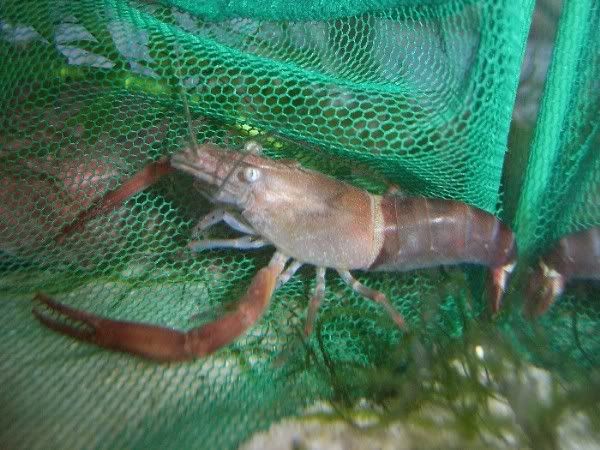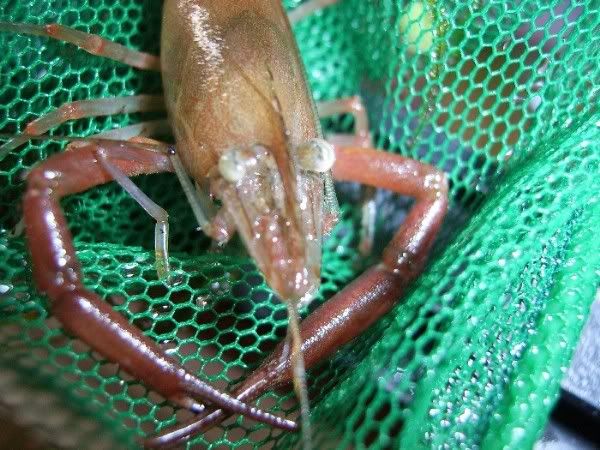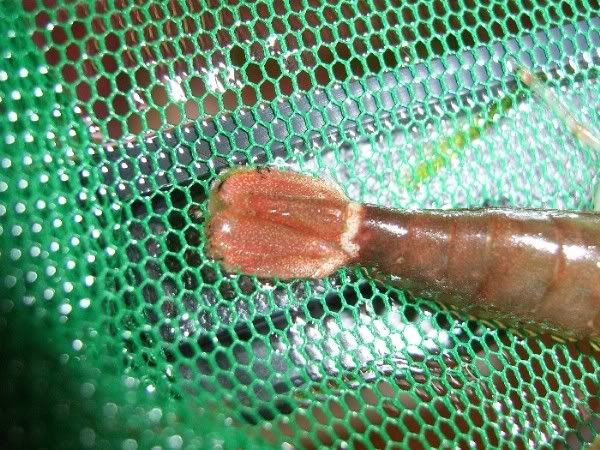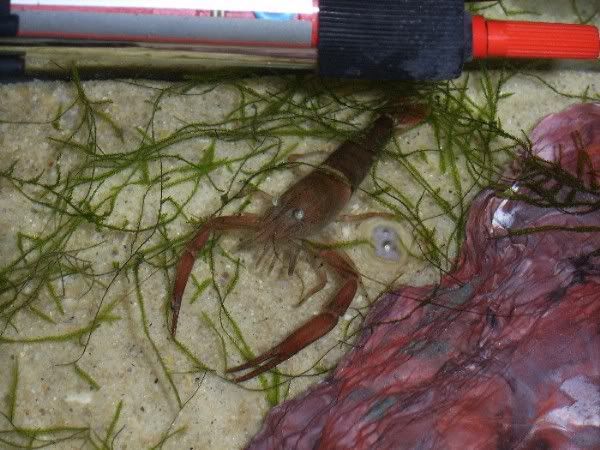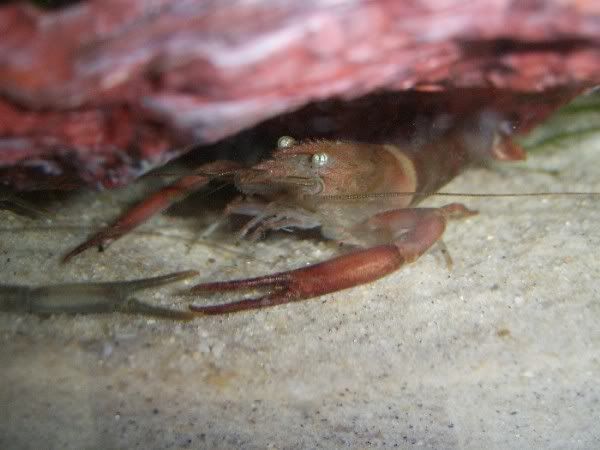Aquascaping: The substrate is comprised of thoroughly-washed “sterilized play sand” (as is marketed for children’s sandpits), ranging from five to seven centimeters in depth. Loose clumps of Java moss (Vesicularia dubyana) lie strewn about the tank floor; along the back pane of the right-hand chamber is a single “mini-sword” (presumably Lilaeopsis novae-zelandiae); Salvinia natans, duckweed (Lemna minor), and a straggly sprig of true Elodea sp. float at the surface. [The plastic décor I have leaned against the panes will likely be replaced with thin pieces of slate.]
Hardware: Soft lighting is realized via hood-mounted fluorescent strip light (25 watts); the submersible heater, set to 78° F (~26° C), is a 50-watt Marineland model; a simple air-pump-operated sponge filter services the tank.
Fauna:
Left Chamber – Two (likely male) “M. duarii” and three brown ramshorn snails (Planorbis sp.) of assorted sizes.
Dominant male:
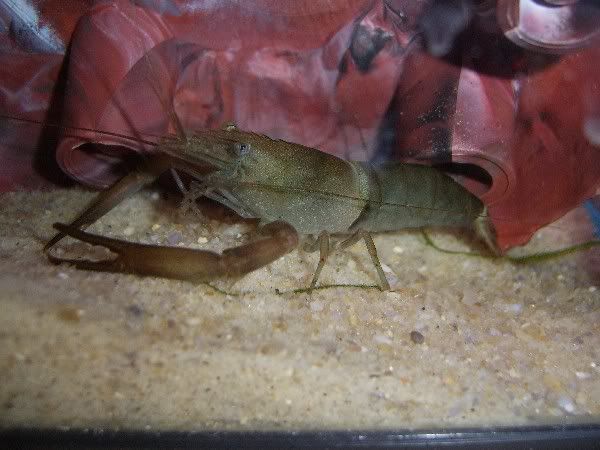
Subordinate male:

Right Chamber – One ovigerous female “M. duarii” (I have observed several eggs, not visible in the images, amongst its pleopods) and two ramshorns.
Female:

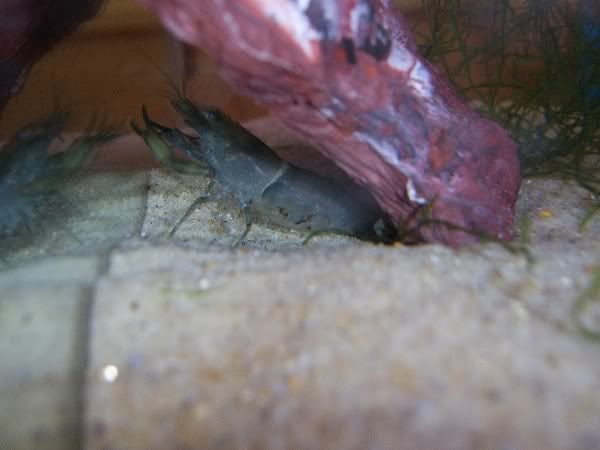
As “M. duarii” adheres to the higher-order method of crustacean reproduction, the resultant young will (as with most Caridina spp., e.g. red cherry shrimp) be fully-formed miniatures of the adults.
Compare the above specimens with…
…a juvenile crayfish (likely Procambarus sp.):
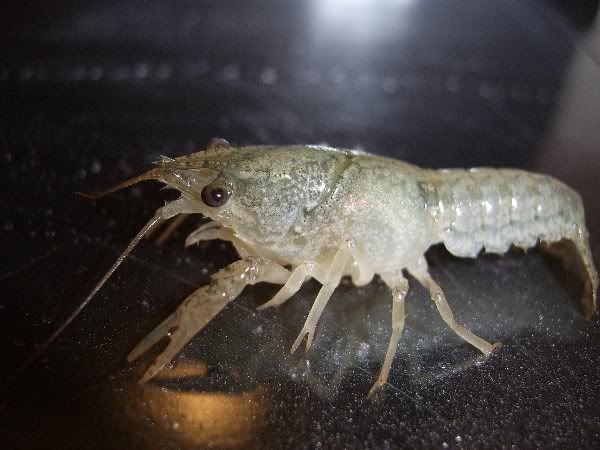
…and another Macrobrachium sp.:
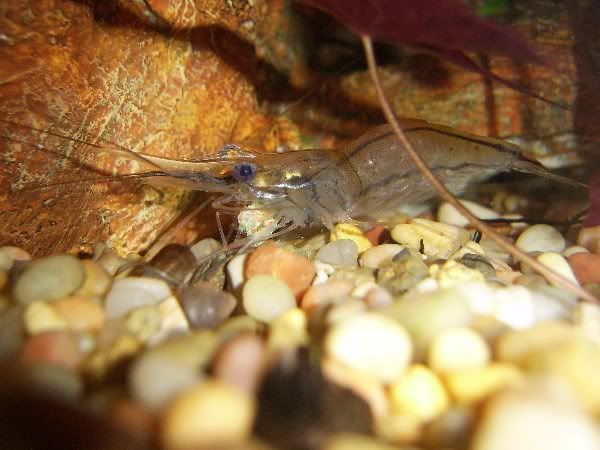
Behavior: I have found M. duarii to be somewhat timid, pacing agitatedly and attempting to burrow beneath aquarium fixtures in the absence of adequate cover (though the stress of shipping likely accounts for much of this behavior). While all three largely ignored freeze-dried krill, the subordinate male and the female respectively nibbled cichlid pellets and soaked “aquatic turtle sticks”; the dominant male has so far consumed feeder guppies (Poecilia reticulata) and bottom-feeder tablets.


